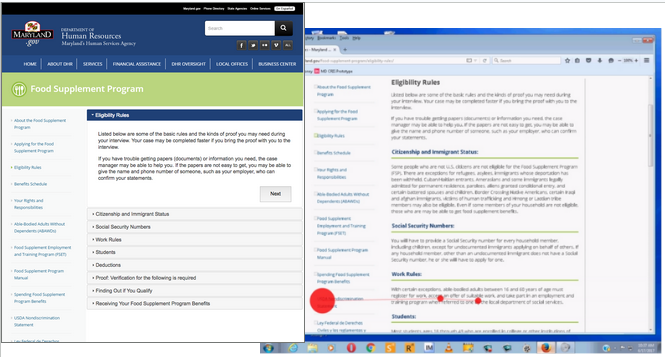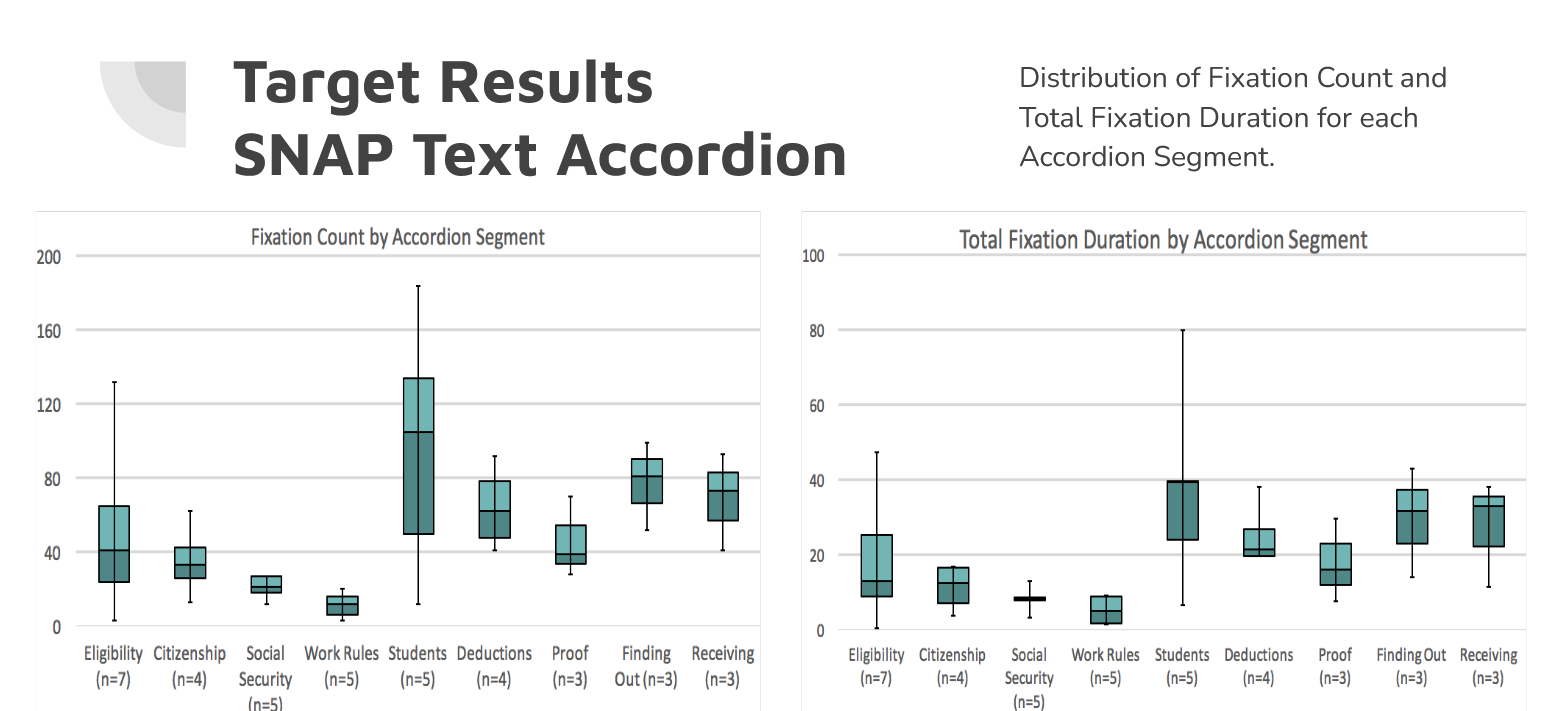Accordions and low literacy
Optimizing means-based benefit applications for those who need them most
tl;dr
As part of my graduate course at the University of Baltimore on Advanced Research Methods, I, along with my partner, performed a quantitative and qualitative research study on how adults with low literacy interacted with accordion patterns when applying for means-based government assistance. Using Tobii eye-tracking software to track and analyze metrics such as fixation duration, fixation count, and visit duration.
While our research into our intended topic was inconclusive, we discovered secondary issues that kept vital assistance out of the hands of those who needed it most.
The research
To test the relative difficulty of navigating accordion patterns in adults with low literacy, all participants completed eligibility forms for Maryland’s Food Supplement Program and Family Self-Sufficiency Program. Using an A/B testing methodology, one set of participants completed these forms using the sites as they currently existed: with sections of inputs organized into accordion patterns that were in a default collapsed state. The other set of participants completed a version of the forms the graduate students modified with all the content and inputs fully visible on a static page.
The Tobii eye-tracking software captured the participants’ eye and mouse placement and logged metrics such as the number of fixations and duration of fixations we could use to perform quantitative analysis. Gaze plots and heat maps allowed us to visualize the participants’ behaviors and gather qualitative observations.
Analysis and results
At a quantitative level, data suggested that participants take longer to complete forms when the information is contained within accordions compared to a static version of the same content, but our results were not statistically significant at our sample size (n=19).
Qualitatively, we observed that often participants were distracted by items outside our designated Area of Interest (AOI) and were less likely to click buttons using a gray fill than buttons with fills of a primary color, like blue.
Would we be able to write a scientific paper proving our hypotheses were correct or not? No, but were we able to change the design of these assistance applications, we would have findings at our disposal to help ease the burden of applying for means-based assistance in adults who already face many challenges.



